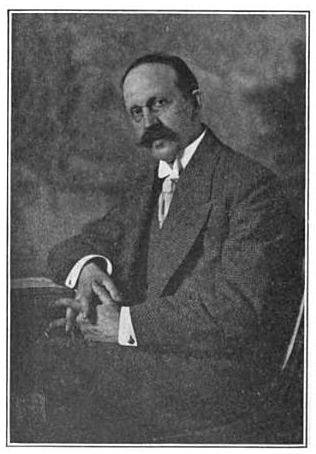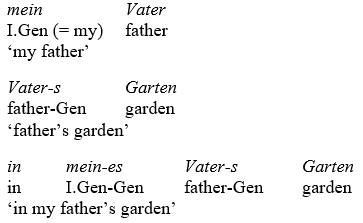1/ Last week we looked into #Kayardild and how beautifully it marks up to four layers of case on one noun. One way to add an extra case to a noun is via #suffixaufnahme. Here’s more about suffixaufnahme in different languages #LinguisticSunday https://twitter.com/dietweeterei/status/1284771479612203008?s=20">https://twitter.com/dietweete...
2/ “Suffixaufnahme” is German and literally translates as ‘suffix adoption’. Sometimes ‘case stacking’ is used as a translation, but this term is also used for another phenomenon (cf. below).
3/ The term “Suffixaufnahme” was introduced by German philologist and early typologist Franz Nikolaus Finck (1867-1910). In his book „Die Haupttypen des Sprachbaus“ from 1910, Finck comments on this example from #Georgian (re-printed in Plank 1995, p. 7).
4/ What struck him is that {bavšv-} ‘child’ is marked with both OblPl (functioning as a genitive here) and with ergative, while in a European-style language it would only be marked with a genitive.
(Notice that suffixaufnahme is not obligatory in Georgian!)
(Notice that suffixaufnahme is not obligatory in Georgian!)
5/ This example is similar to this one from Kayardild we looked at last week: all nouns in the phrase “one of the children” are marked with the same case.
6/ This is the prototypical type of suffixaufnahme: a noun is both marked with genitive and with whatever case is assigned to the phrase it appears in. There are other types, though...
7/ Another frequent type occurs in languages where case is not marked on every single noun within a phrase but cumulates at the, e.g., the end of the phrase. This is the case in #Sumerian:
8/ Here we have a common genitive phrase, the possessor <lugal> & #39;king& #39; is marked with genitive, the possessed object <é> & #39;house& #39; is unmarked.
(example from Plank 1995, p. 40)
(example from Plank 1995, p. 40)
9/ If the phrase determines a location, not /é/ & #39;house& #39; is marked with locative case but <lugal> & #39;king& #39; carries both genitive and locative.
(example from Plank 1995, p. 41)
(example from Plank 1995, p. 41)
10/ And if another possessor is added (<šeš> ‘brother’), the extra genitive is also marked on the last noun.
(example from Plank 1995, p. 41)
(example from Plank 1995, p. 41)
11/ Languages where every word within a phrase is marked with the same case (like Kayardild) are called “word marking language”). Languages like Sumerian where cases cumulate on one word are called “phrase marking languages”.
12/ What these languages share is that a noun ‘adopts’ a case from another noun. This is different from languages where complex case semantics are built from two combined cases. In such cases, no other noun is involved.
13/ See this example from #Chantyal where the inessive and the ablative case combine to form the complex semantic ‘from inside’.
…http://crossasia-repository.ub.uni-heidelberg.de/211/1/Chantyal_Lanuage.pdf">https://crossasia-repository.ub.uni-heidelberg.de/211/1/Cha...
…http://crossasia-repository.ub.uni-heidelberg.de/211/1/Chantyal_Lanuage.pdf">https://crossasia-repository.ub.uni-heidelberg.de/211/1/Cha...
14/ To a very limited extent suffixaufnahme also exists in #German. If one analyses the possessive articles mein/dein/sein/ihr etc. as inflected genitive forms of the corresponding personal pronouns (ich/du/er/sie etc.) then they can be marked with more than one case:
15/ Most of the information in this thread is from the book “Double case: Agreement by suffixaufnahme” by Frans Plank (1995). I highly recommend the whole book and especially the introduction and epiloge to you.
https://www.oup.com.au/books/others/9780195087758-double-case">https://www.oup.com.au/books/oth...
https://www.oup.com.au/books/others/9780195087758-double-case">https://www.oup.com.au/books/oth...
16/ Plank lists 91 languages as "Aufnahme"-languages of which 19 show the "prototypicle" type auf suffixaufnahme. Languages can also & #39;adopt& #39; other categories,e .g. number or gender.
17/ "Aufnahme"-languages seem to cumulate geographically. One "hotspot" is Australia. If you are interested in suffixaufnahme and double case in Australian language I suggest the paper “Multiple Case-Marking in Australian Languages” by Alan Dench and Nick Evans (1988).

 Read on Twitter
Read on Twitter









